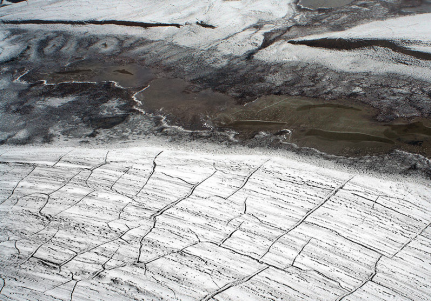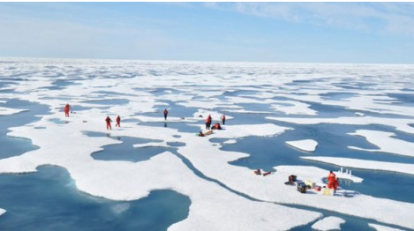Interview by Eleonora Milazzo – ACCEL European Fellow
- What is the core of your work in the Arctic?
I study the terrestrial Arctic system and, more specifically, I look at how permafrost thaw is impacting the global carbon cycle. Permafrost soils stores over a thousand pentagram of carbon. And that’s about half of the global amount carbon stored in soils.
My interest is what happens when permafrost thaws, where the carbon is ending up and in what form, and what the long-term impacts are on the carbon cycle, especially on decadal or millennial time scale.
- How do you assess the risks connected to thawing permafrost and carbon cycling in the Arctic?

Photo credit: Brocken Inaglory (Own work) [CC-BY-SA-3.0 (http://creativecommons.org/licenses/by-sa/3.0)
Disturbance is the biggest source of permafrost thaw. Forest fires and wildfires are the main risk and are a very active part of the northern boreal and arctic ecosystems. They are usually caused by lightning, but more frequently by humans.
These fires are becoming more severe not only in terms of the amount of area burnt but also in term of how deeply they burn into the soil. The fire takes off the organic layer of the soil that acts like insulator to the permafrost. This organic layer keeps the permafrost cold and protects it from the warm air temperatures. When you take off that organic layer after a burn you’re exposing that permafrost to the atmosphere more directly. In addition, the char, which is black absorbs more heat. Those two effects combined result in permafrost thaw. So these areas burnt are more vulnerable to permafrost thaw.
The other thing is human disturbance. In parts of Alaska, where you build roads permafrost thaw happens underneath those roads. Because roads absorb the heat and it becomes difficult for the permafrost to maintain itself in those areas.
Overall, warming air temperatures in the Arctic is making permafrost warmer, making it easier for the permafrost to thaw.
What we study is very complex and to distill it into short pieces is very difficult. I think you just have to figure out what your message and understand what your audience’s background is. It is also a good idea to come up with some conclusion and recommendation. If you’re faced with criticism, it is good to engage that criticism and work through the problems the audience has with what you’re saying patiently.
Another point is that we as scientists often talk about things in terms of uncertainties when it comes to climate change, but there’s a lot that we do know. Communicate what we do know and be very clear is important. For example, we do know that humans are causing climate change and there’s broad consensus on that. But a lot of times when scientists talk to policy makers or the media, they frame things in terms of uncertainties or use words like “may” and “likely” instead of “will”. Of course there is a degree in every field of science, but those uncertainties are what the public focuses on. It is important to take the proper words out to get the message across. An analogy is when you go to the doctor and the doctor tells you that there’s a 99% chance that a medical procedure is going to make you better. There’s always the 1% that it may not help you or make things worse. But are you going to do it or not? Chances are you will proceed with the procedure. Trust your doctor and that she’s going to give you the very best information possible. The same philosophy should be used when listening to climate scientists and the data they present.
Find out more about Miriam Jones >
Disclaimer: The views and opinions expressed in this article are those of the interview subject alone and do not necessarily reflect the official views of ACCEL, ELEEP, Ecologic Institute, or the Atlantic Council.

